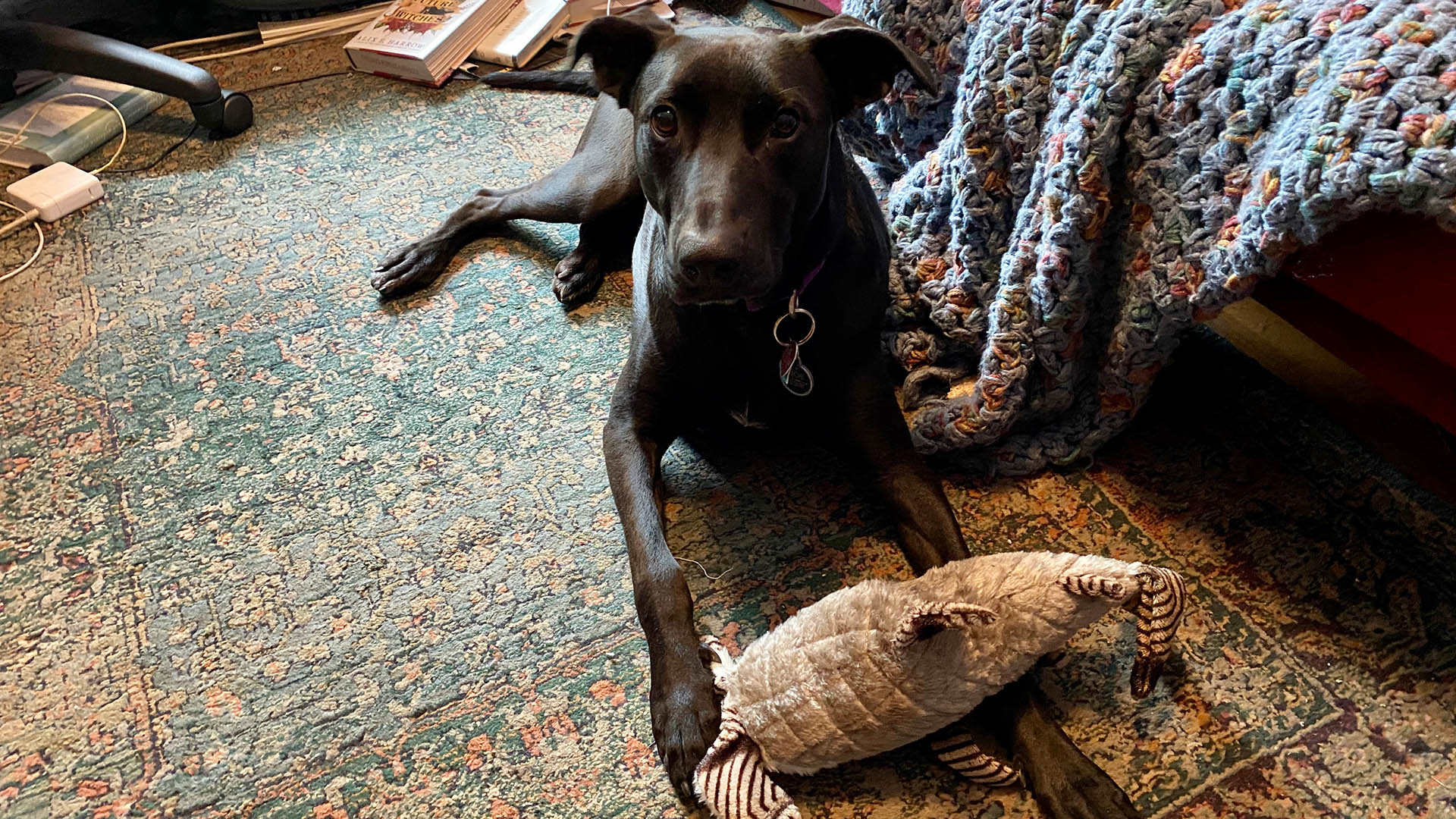And Now A Brand-New Theory About How Dogs Became Our Very Best Friends
For the past 20,000 years or so, dogs and humans have been as in love with each other as it's possible for any two species to be. It's not just wishful thinking or extrapolation. There's archeological evidence: in 1978, an excavation team in Israel dug up the skeleton of a small human cuddling a puppy.
But how did this friendship come to be? Over the years, scientists have determined that at some point, most likely in northern Europe during the Ice Age, wolves began hanging out with humans and, over time, lost many of their fierce wolfish qualities and evolved into the lovable creatures we know as dogs. It's been theorized that this started when humans began began sharing their food with the wolves.
Still, some researchers remained skeptical. During the Ice Age, humans and wolves went after the same prey—and each other—and there wasn't much prey go to after anyway, so what practical use would there be for them to share? Perhaps, one theory suggested, wolves were attracted by the humans' garbage. But humans didn't stick around in one place long enough to be a reliable source of scraps. (I'm assuming that the big eyes, head-tilting, and other forms of adorable begging developed after wolves had become dogs.)
Now a new study published last week in the journal Scientific Reports suggests another scenario. Humans are not equipped to digest large amounts of lean protein; we need to supplement it with fat, which in the pre-agricultural Ice Age meant animal fat, since plant-based carbs were not an option. Wolves, however, can live on lean meat for months. What if, the researchers asked, humans killed a surplus of game, ate the fat and as much as they could stand of the lean, and tossed the rest to the wolves? And why wouldn't the wolves have decided to stay with the humans?
"Given that there would not have been competition over resources, even a small benefit from keeping captive wolves, such as hunting aid or protection against predators, would have been advantageous for both species," the researchers write.
This would have happened simultaneously in many locations across Europe. Over time, the wolves would have become domesticated and used for other tasks, such as pulling sleds or herding and protecting livestock. As they evolved into dogs, humans evolved along with them until the two species had become best friends.
"It has never been explained before that why humans joined their forces with a competitor," Maria Lahtinen, the lead author of the study and an archaeologist with the Finnish Food Authority, told Business Insider. But now it has!
Since the advent of food manufactured specifically for dogs, though, I wonder if dogs actually believe that we're sharing our food with them. Based on many years of study of my own dogs at mealtimes (especially when there is steak or roast chicken on the human table), I believe dogs would be much happier if we went back to the Ice Age system.
